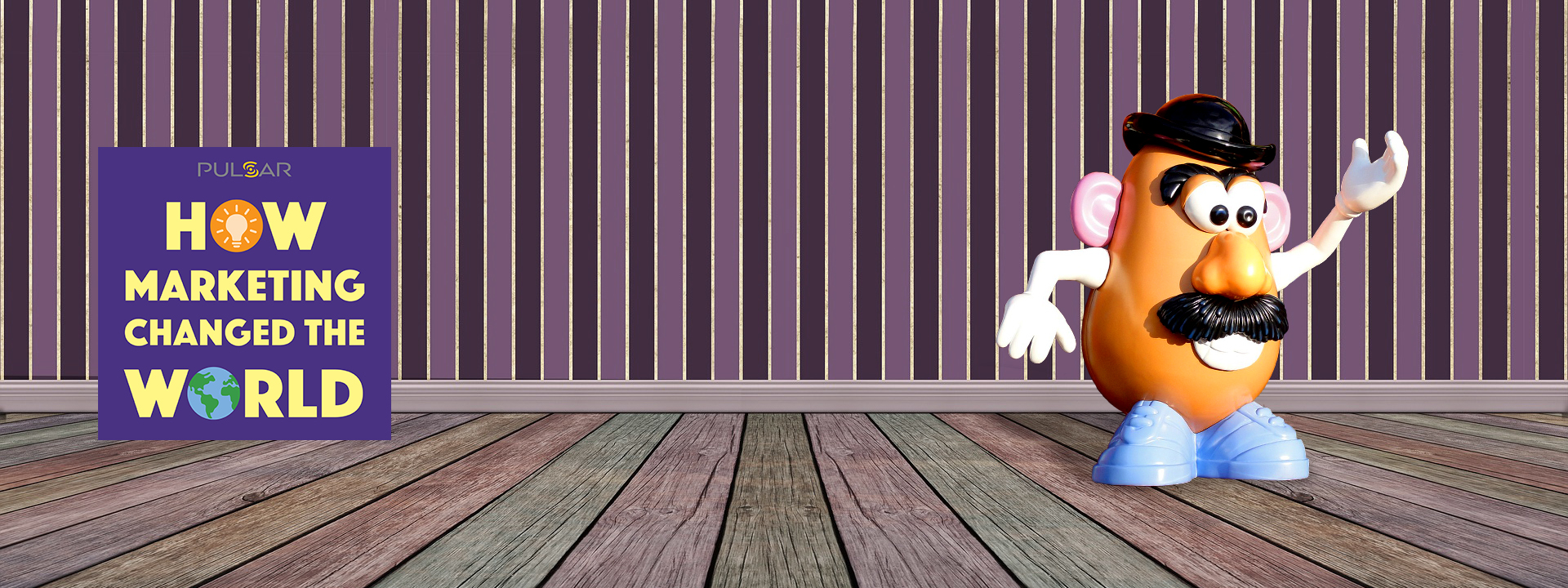MR. POTATO HEAD
According to a study released by Harvard, social media companies made almost $11 billion from children in 2022. The most frequently cited figure on children's exposure to media advertising claims that, on average, children are targeted more than 3000 times every day. That doesn't represent how many times children actually see ads, obviously, because that figure is ridiculously high, but it demonstrates the importance children play in the minds of advertisers. Children under 18 account for $180 billion in spending every year in the United States. But this wasn't always the case. As recently as 70 years ago, no company dreamed of advertising directly to children. But a textile company that had evolved into a toy company, Hassenfeld Brothers, changed everything the moment they decided to experiment with a brand new medium: television.
In 1949, New York City graphic designer George Lerner created a unique doll for his younger sister. He fashioned facial feature pins out of plastic and stuck them into a potato. He called the concept "Funny Face Man." After two years of struggling to find a market for the toy, he approached Hassenfeld Brothers, a textile company that also sold school supplies and was looking to expand into the toy market. Hassenfeld Brothers bought the rights to produce the toy for $5000, and gave George Lerner 5% in royalties for every unit sold.
The first set produced by Hassenfeld Brothers contained hands, feet, ears, two mouths, two pairs of eyes, four different noses, three hats, eyeglasses, a pipe, and felt facial hair. That original kit sold for 98 cents, and launched in May 1952 with a new name: Mr. Potato Head. Prior to the launch, Hassenfeld Brothers decided to try something new. On April 30, 1952, Mr. Potato Head became the first toy advertised on television. It was also the first television advertisement targeted directly at children. And it was a smashing success. More than one million kits were sold in the first year.

After a decade of sales, complaints increased from parents that the pieces were dangerously sharp and that rotting vegetables left around the house with goofy faces were disgusting. So in 1964, a plastic body was added, and the pieces were changed from spiked pins to dull pegs. Hassenfeld Brothers would go on to become one of the largest toy companies in the world. In 1968, the company officially shortened its name to the one we all recognize today: Hasbro.
The Walt Disney Company was one of the many corporations that took their cue from Hasbro and began marketing directly to children. In 1995, Mr. and Mrs. Potato Head were the only specifically branded toys to appear in Pixar's first movie, Toy Story. Walt Disney handled all of the marketing, tie-in toys, and product placement. Sales of Hasbro's first television experiment shot up 800%, pretty impressive for a 43-year-old toy. Other movies featuring Hasbro toys would follow, including Transformers, G.I. Joe, Power Rangers, and My Little Pony.
Advertising has changed forever all over the world. Every year, companies spend more than $17 billion marketing to children. In addition to their collective buying power, children are responsible for influencing parental purchases over 95% of the time when considering breakfast and lunch foods, restaurants, clothing, entertainment, and vacations. That accounts for 20% of all consumer purchases in the United States. And it all started with a one-minute, unproven ad of a funny face on a potato.
SOURCES
- "Social Media Platforms Generate Billions of Dollars in Revenue from U.S. Youth: Findings from a Simulated Revenue Model" from Harvard T.H. Chan School of Public Health
- "The Effect of Advertising on Children and Adolescents - A Critical Appraisal" from University of Rajasthan
- "Children, Adolescents, and Advertising" from the American Academy of Pediatrics
- "Mr. Potato Head History" from History of Dolls
- "The Surprisingly Starchy History of Mr. Potato Head" from Allrecipes
- "Watch a Vintage Commercial for Mr. Potato Head, the First Toy Advertised on TV" from Mental Floss
- "Is Mr. Potato Head to Blame for 'Pester Power' Ads?" from BBC
- "How Mr. Potato Head Changed the Advertising Business" from Atlas Obscura
- "Mr. Potato Head" from PBS
- "From Cereal Box Bonus to Toy Giant: How Mr. Potato Head Changed Marketing" from Strixus
- "Marketing to Children: Tips, Tactics, and Taboos" from Concordia University St. Paul
- "Consumer Expenditures - 2022" from U.S. Bureau of Labor Statistics













